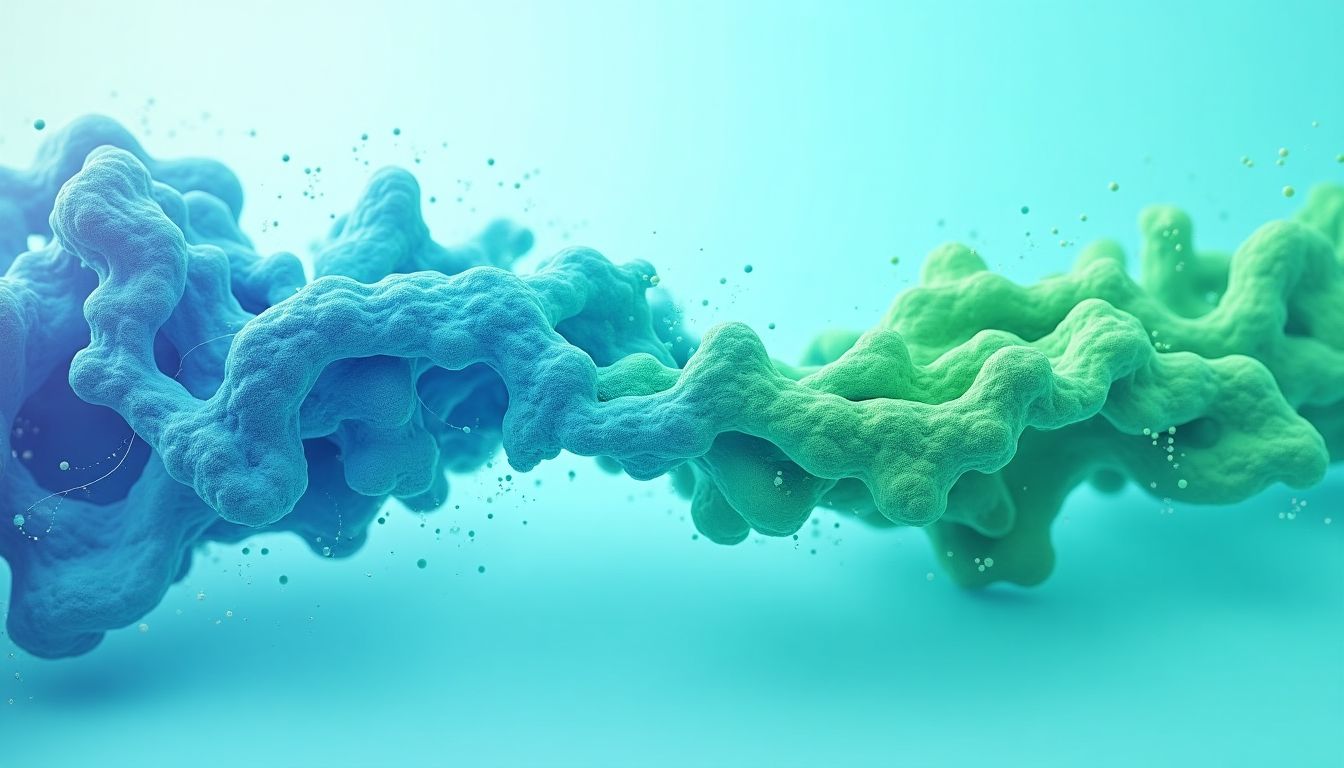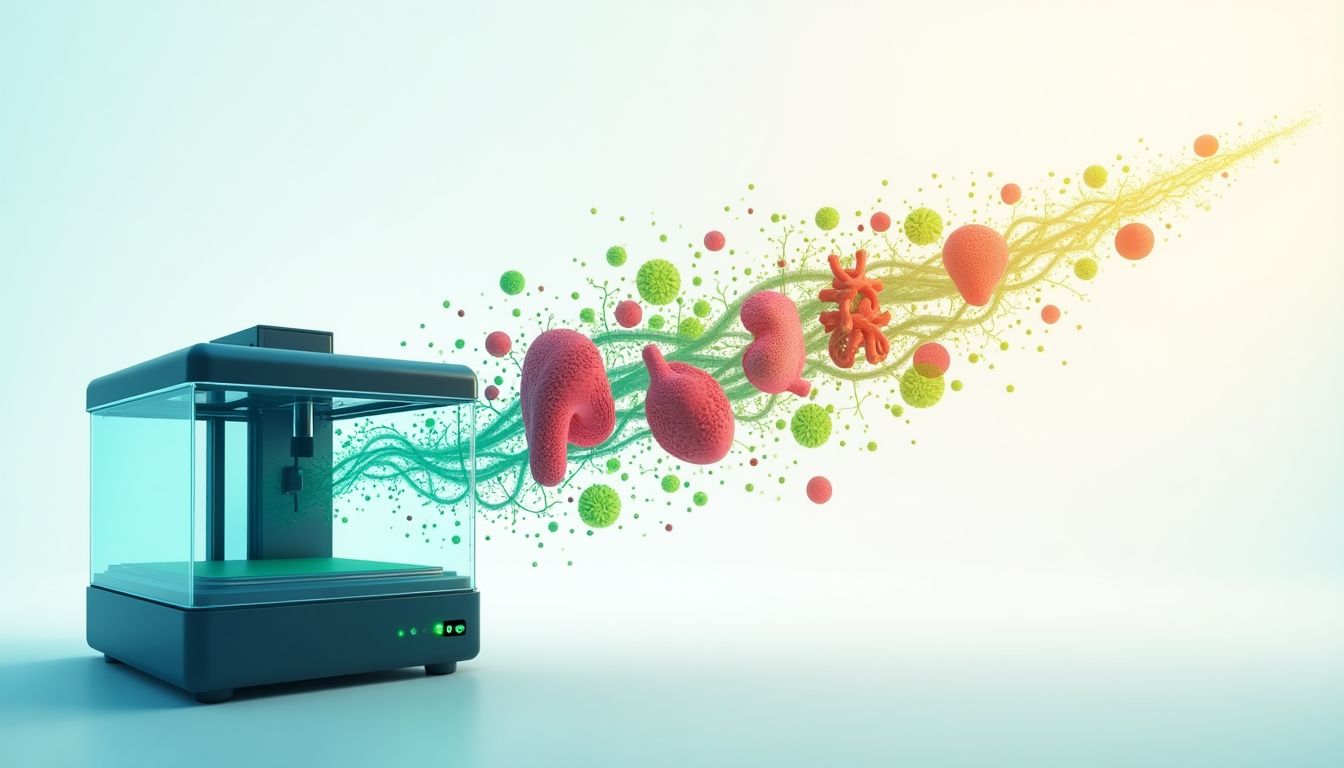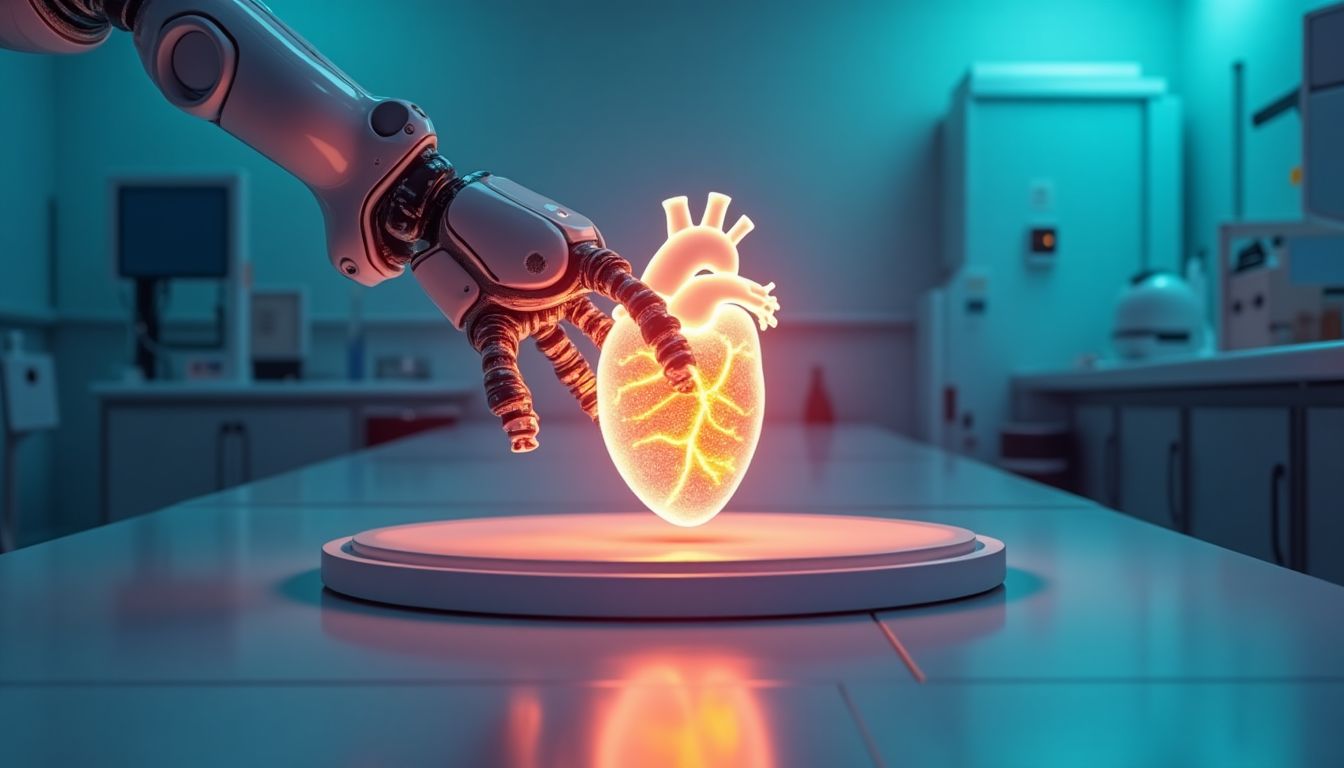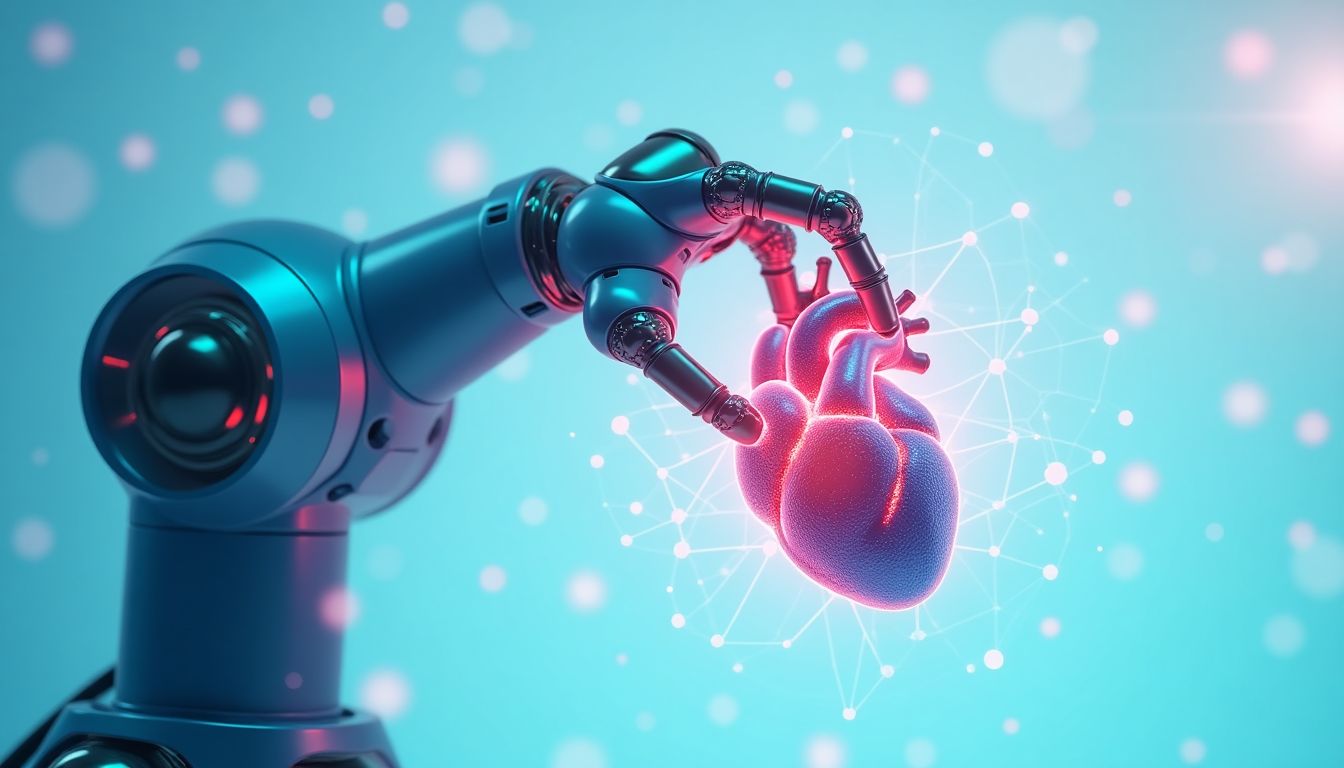Introduction: The New Age of Medicine
No man is an island entire of itself; every man is a piece of the continent, a part of the main. — John Donne
This profound quote reminds us of the interconnectedness of humanity, particularly in a time when the lives of individuals are entwined with a broader social issue — the organ shortage crisis. Just as Donne suggests that every person contributes to the whole, the urgency to find new ways to address the organ shortage does not just belong to those waiting for a transplant. It is a collective responsibility that demands innovative solutions. Have we reached the point where artificial intelligence (AI) might step in to become humanity's new organ supplier? This isn't just a radical idea; it’s a tantalizing possibility that may very well redefine how we understand life and medicine.
The demand for organ transplants has skyrocketed, with over 100,000 people in the United States alone awaiting a lifesaving transplant. The current system is archaic and overwhelmed. But what if AI could not only help design but also grow custom organs tailored for each individual? Exploring the role of AI in 3D bioprinting offers a glimpse into a future where medical technology can break down the barriers of despair and usher in a new era of hope.
Join us as we embark on this journey to uncover the potential of AI and bioprinting to change the landscape of organ transplantation forever.
1. The Current Organ Shortage Crisis
Each year, thousands of patients die while waiting for organ transplants. This crisis isn't just a statistic; it's a harsh reality affecting families, healthcare providers, and society as a whole.
- According to the U.S. Department of Health and Human Services, more than 17 people die each day due to the lack of available organs for transplantation.
- The average wait time for a kidney transplant can stretch to over three years, but some patients die before they ever receive their new organ.
- This mismatch between supply and demand creates immense pressure on healthcare systems, not to mention the emotional toll on patients and their families.
1.1 Causes of Shortage
Various factors contribute to the organ shortage crisis. Cultural beliefs, political barriers, and logistical challenges all play a role. For example, misconceptions about organ donation can deter potential donors from signing up. Additionally, policies in place often complicate the donation process, leaving many organs unharvested. A report by the Institute of Medicine discusses how the public's attitude can greatly influence donation rates.
1.2 Humanitarian Impact
The human impact of the organ shortage crisis is profound, often reported through the heart-wrenching testimonials of families affected. One story shared in a study by the National Institutes of Health describes a mother who lost her 16-year-old son to heart failure due to a lack of available organs. Such tales serve as reminders that behind the statistics are individuals and families facing unimaginable grief. While we often speak of numbers, it’s vital to recognize the human stories that weave through these statistics, impressing upon us the urgency for solutions.
2. Current Technological Efforts in Organ Replacement
Despite significant strides made in organ transplantation, the traditional methods still fall short. Every year, patients around the world need new organs more than ever, and while some technological advances have helped, they don’t entirely ease the burden. In this section, we will cover two leading solutions that aim to bridge the gap: artificial organs and xenotransplantation. Each of these ideas holds promise, but they are not without limitations.
- Overview of existing technologies: artificial organs and xenotransplantation.
- Limitations of current bioengineering techniques.
2.1 Advances in Prosthetics and Xenotransplantation
Let’s start with artificial organs, which are becoming more popular in the medical field. These are man-made devices that mimic the function of natural organs. Think of them as the superhero sidekicks of our biological systems! For instance, a remarkable success story can be found in heart pumps, which have been lifesavers for patients awaiting heart transplants. However, they’re not perfect and they often come with risks like infections and blood clots.
(Check out the latest developments at American Heart Association for more information.)
Then there's xenotransplantation, where animal organs are used to address human shortages. It sounds a bit like something out of a sci-fi movie, but scientists are experimenting with pig organs. Pigs are surprisingly similar to humans in terms of organ size and function, which makes them a potential match. However, there are worries about disease transmission and ethical concerns surrounding the use of animals. Yikes, right?
2.2 The Bioprinting Landscape
Next up is bioprinting technology, which stands at the cutting edge of medical advancements. This process involves using 3D printing to create natural tissue structures, potentially leading to organs grown specifically for a patient’s needs. It’s like ordering a tailored suit, but instead of fabric, you’re blending living cells!
However, it's not all sunshine and rainbows. Current bioprinting methods still struggle with structural integrity and functionality of the printed organs. According to research, success rates for full organ functionality are still a bit hit or miss (NCBI has done some interesting studies on this). That means while we are making progress, we still have a journey ahead before we can print ourselves a new heart or kidney.
3. How AI Enhances Bioprinting Technology
Artificial intelligence—the gamechanger in our fight against organ shortages. Just imagine the superhero team-up of bioprinting and AI: it’s like Batman and Robin for the medical world! In this section, we will explore how AI can enhance bioprinting technology, transforming it into a powerful tool for creating new, life-saving organs.
- The role of machine learning in optimizing bioprinting processes.
- Case studies of successful AI implementations in biotechnologies.
3.1 Predictive Algorithms in Organs Creation
AI's use of predictive algorithms plays a crucial role in the organ growth process. By analyzing a massive amount of patient data, AI can help predict whether a bioprinted organ will take without being rejected. It’s like trying to guess if that last slice of pizza will make you full — sometimes you just need to analyze the toppings and crust! When it comes to patient-specific profiles, AI looks at factors such as genetics, lifestyle, and health history, so doctors can create a customized organ.
How about a quick success story? After implementing AI at their facilities, researchers at Johns Hopkins University have reported substantial advancements in patient-matched organ success rates. It skips right over that awkward stage where a patient might have to say goodbye to a poorly matching organ!
3.2 AI in Tailoring Bioprinting Techniques
Now, let’s take a closer look at how AI analyzes patient-specific data to produce highly efficient prints. AI algorithms are well-equipped to sift through information and recognize patterns that humans may overlook. This means that the AI can suggest to the bioengineers the best ways to design an organ based on unique patient characteristics. Just like how a tailor might adjust a dress based on your height, AI fine-tunes the specifications ensuring a more successful outcome.
Examples of successful AI applications are plentiful. A recent collaboration between MIT and several biotech companies harnessed machine learning to better approach bioprinting challenges. The results were awe-inspiring. As researchers continue to push the boundaries, the possibilities for customized organ design seem endless.
4. Ethical Considerations and Regulatory Challenges
With the promise of technology comes great responsibility. As we explore the field of AI and bioprinting technology, we uncover various ethical implications and regulatory challenges that must be addressed. These concerns go beyond mere science; they touch on the fundamental values of human life and dignity. We must ask ourselves not only what we can do but also what we should do.
- Ethical implications surrounding AI and bioprinting.
- The regulatory landscape governing bioprinting technology.
4.1 Ethical Dilemmas in Organ Ownership
If we can create organs, who owns them? This question raises significant moral and ethical dilemmas. Here are some key considerations:
- Is it selfish for someone to own their bioprinted organ?
- What happens if someone decides to sell their bioprinted organs?
- How would organ ownership reflect social inequalities?
Imagine a scenario where wealthy individuals can purchase organs while the less fortunate cannot afford them. This could lead to a world where access to life-saving treatments is dictated by financial means rather than need.
4.2 Regulatory Hurdles to Overcome
The path to widespread acceptance of bioprinted organs requires robust regulations to ensure safety and efficacy. Here are some of the existing regulations and proposed frameworks:
- FDA Approval: The U.S. Food and Drug Administration (FDA) currently regulates medical devices and treatments, including bioprinted organs.
- Clinical Trials: Extensive testing in clinical trials is crucial for ensuring that bioprinted organs are safe for human use.
- International Guidelines: Considering that organ transplantation is a global issue, international guidelines must be established to create uniform standards across countries.
As the technology evolves, policymakers will need to adapt regulations accordingly, balancing innovation with ethical considerations.
5. The Future of AI and Organ Transplantation
Looking ahead, we see a landscape filled with possibilities. The future of AI and organ transplantation promises not just innovation but also a massive change in how we approach healthcare. The integration of these technologies could reshape the world's healthcare systems, making them more efficient, equitable, and effective.
- The potential advancements in AI and bioprinting technology over the next decade.
- Possible societal shifts and acceptance of bioprinting in medicine.
5.1 Integration with Telemedicine and Remote Monitoring
Imagine a world where AI can inform not just how we design organs, but also how we monitor health remotely. Here are some potential benefits:
- Real-time Data: AI could analyze data from wearable devices, adapting organ designs to fit patients' dynamic health conditions.
- Telehealth Opportunities: Remote consultations could help integrate bioprinted organs effectively into patient treatment plans.
- Faster Response Times: Instant alerts on health changes can guide quick adjustments in treatments.
5.2 Global Effects and Accessibility
As bioprinting technology becomes more accessible, its global impact could be profound. Here’s how:
- Reduced Costs: Bioprinting may lower the overall costs of organ replacements, making them available to a broader audience.
- Worldwide Access: Developing countries could benefit from locally printed organs, potentially reducing reliance on international organ donations.
- Social Change: A more equitable health system may develop, leading to reduced disparities in health care access.
As we embrace these advancements in AI and bioprinting, we move towards a future where organ transplantation is no longer a struggle, but a solution. We stand on the edge of a medical revolution that could change lives for the better, creating a world where no one must wait for a second chance at life.
6. AI Solutions: How Would AI Tackle This Issue?
AI holds the key to a future where organ scarcity is no longer a dilemma. Imagine a world where artificial intelligence could revolutionize the organ donation landscape so drastically that patients no longer find themselves bound to waiting lists. AI could entirely transform how we approach organ shortages by leveraging data, predictions, and tailor-made solutions. Here’s how it could unfold:
6.1 Patient-Centric Design
First, AI would analyze vast datasets encompassing patient health records, genetic information, and organ compatibility requirements. Advanced algorithms could identify optimal donors and design organs that closely match a patient's specific needs. This could involve using information about a patient’s immune response and tailoring the organ characteristics accordingly, significantly reducing rejection rates. This approach signifies a shift from a one-size-fits-all solution to individualized care—akin to bespoke tailoring but for our internal anatomy.
6.2 Continuous Learning Mechanisms
AI systems would continuously learn from the outcomes of previous organ transplants and bioprinting processes. By integrating neural networks capable of fine-tuning their predictions based on real-time data, the system could improve its success rates. For instance, as more organs are bioprinted and utilized, the AI could begin to recognize patterns in how certain materials perform and how patients react to them. This empowers a more responsive healthcare system, one that learns and evolves.
6.3 Resource Management and Optimization
AI could also fundamentally alter how resources are allocated during the bioprinting process. Algorithms could manage labor, material use, and timelines to maximize efficiency, ensuring that each stage of the process flows smoothly. Picture an AI system that oversees everything from material sourcing to the 3D printing itself, ensuring the right amount of biocompatible materials are utilized based on demand and minimizing waste, echoing the principles of a circular economy.
Actions Schedule/Roadmap
This tentative roadmap is a guide for any healthcare organization, research institution, or government entity interested in AI-driven organ bioprinting:
Day 1:
Research foundational technologies including existing bioprinting techniques and AI algorithms. Establish partnerships with experienced institutions such as the Massachusetts Institute of Technology to tap into their expertise.
Day 2:
Form an interdisciplinary team that includes bioengineers, computer scientists, ethicists, and healthcare professionals. This diversity will foster innovation, mirroring collaborative efforts seen at facilities such as the Jet Propulsion Laboratory.
Day 3:
Conduct a comprehensive assessment of existing bioengineering capabilities at affiliated institutions. Tap into resources such as the National Heart, Lung, and Blood Institute for insights on current advancements.
Week 1:
Develop a project proposal that outlines objectives, methodologies, and potential impacts. Seek initial funding through governmental grants such as those offered by the National Institutes of Health.
Week 2:
Initiate collaborations with leading hospitals and biotech firms for data-driven insights. Institutions like University of Washington can serve as testing grounds for initial bioprinting projects.
Week 3:
Begin prototyping AI algorithms for organ design, focusing on logistics and operational efficiency. Innovative software platforms, such as IBM Watson, might provide foundational models for machine learning applications.
Month 1:
Finalize the model for AI-driven bioprinting, ensuring all resources comply with regulatory standards as stipulated by entities like the Food and Drug Administration.
Month 2:
Conduct preliminary tests on organ-printing capabilities using synthetic materials. Meanwhile, keep an eye on evolving materials science, especially advancements from organizations like DuPont.
Month 3:
Iterate on designs based on initial feedback; employ agile methodologies to refine AI algorithms for improved future performance.
Year 1:
Launch the first clinical trials utilizing bioprinted organs created from patient-specific cells. Collaborate with institutions like ClinicalTrials.gov to ensure widespread exposure and collaboration.
Year 1.5:
Expand trials across various hospital sites, collecting patient feedback for further iteration. This phase will also emphasize public outreach, partnering with organizations that focus on organ donation awareness.
Year 2:
Publish comprehensive results in scientific journals while seeking FDA approval for broader clinical use; outline commercialization strategies and global distribution partnerships—potentially aligning with established entities like 3M for tech validation.
Conclusion: A New Tomorrow for Medicine
As we stand at the intersection of technology and healthcare, the potential for AI-driven organ bioprinting offers new hope for patients around the globe. The thought of a world where organ shortages become an outdated concern feels nearly palpable. By harnessing the power of artificial intelligence, not only can we create tailored solutions that fit individual patient needs, but we can also finally liberate countless lives from the shackles of organ donation waitlists. This transformation requires a collective effort: researchers, healthcare professionals, policymakers, and you, the public, all have a role in shaping the future of medicine. Let’s unite in our commitment to making this dream a reality. How do you envision a future where AI changes the dynamics of organ donation? Share your thoughts in the comments below!
Frequently Asked Questions (FAQ)
-
What is bioprinting?
Bioprinting is a special type of 3D printing where scientists create living tissues and organs. Instead of using plastic or metal like regular printers, bioprinters use cells and biomaterials to build structures that can function like real human organs. Think of it as creating a "living sculpture" that could eventually turn into a heart or kidney. For more information about 3D printing, check out this article on Wikipedia. -
How can AI improve bioprinting?
Artificial Intelligence (AI) is like a smart assistant for bioprinting. It helps by:- Optimizing designs: AI can create the best shape and structure for organs.
- Predicting outcomes: Using past data, AI can guess how well an organ will work after it's printed.
- Personalizing organs: AI can help design organs that fit each patient's needs, reducing the chance of rejection.
This means better chances for patients receiving bioprinted organs!
-
Are there ethical issues related to organ bioprinting?
Yes, bioprinting raises some serious questions. For example:- Who owns a bioprinted organ? Is it the person that received it or the company that made it?
- What happens if someone creates a living organ that can think or feel?
- How do we ensure consent when it comes to harvesting cells for bioprinting?
These issues need careful consideration as this technology moves forward. For basic guidelines on bioethics, you can explore resources provided by the U.S. Presidential Commission for the Study of Bioethical Issues.
-
What is the timeline for seeing bioprinted organs in clinical use?
It's hard to say exactly, but with enough focus and funding, we could see bioprinted organs making their way into hospitals within the next decade. Experts like those at Johns Hopkins Medicine are working hard toward making this possible! -
How does AI impact patient outcomes in organ transplantation?
AI could greatly improve the success of transplants. By allowing doctors to target specific designs based on a patient's body, AI helps ensure that:- Organs match better with their recipients, which can lead to fewer complications.
- Rejection rates are reduced as organs will be more compatible with the patient's body.
- Doctors can make quicker and more informed decisions during the transplant process.
This means hope for more patients who need transplants!
-
What is ongoing research in the field of organ bioprinting?
Many research institutions, like MIT, are at the forefront of this technology. Their studies aim to improve the materials used in bioprinting, develop better algorithms for AI, and test how bioprinted organs respond in real-world scenarios. -
Is bioprinting safe for patients?
Currently, clinical trials are testing the safety of bioprinted organs. Researchers, including teams at Cleveland Clinic, aim to ensure these organs are safe before introducing them to wider medical use. Safety is a primary concern as we explore these new technologies.
Wait! There's more...check out our gripping short story that continues the journey: The Magic of Connection
Disclaimer: This article may contain affiliate links. If you click on these links and make a purchase, we may receive a commission at no additional cost to you. Our recommendations and reviews are always independent and objective, aiming to provide you with the best information and resources.
Get Exclusive Stories, Photos, Art & Offers - Subscribe Today!





























Post Comment
You must be logged in to post a comment.